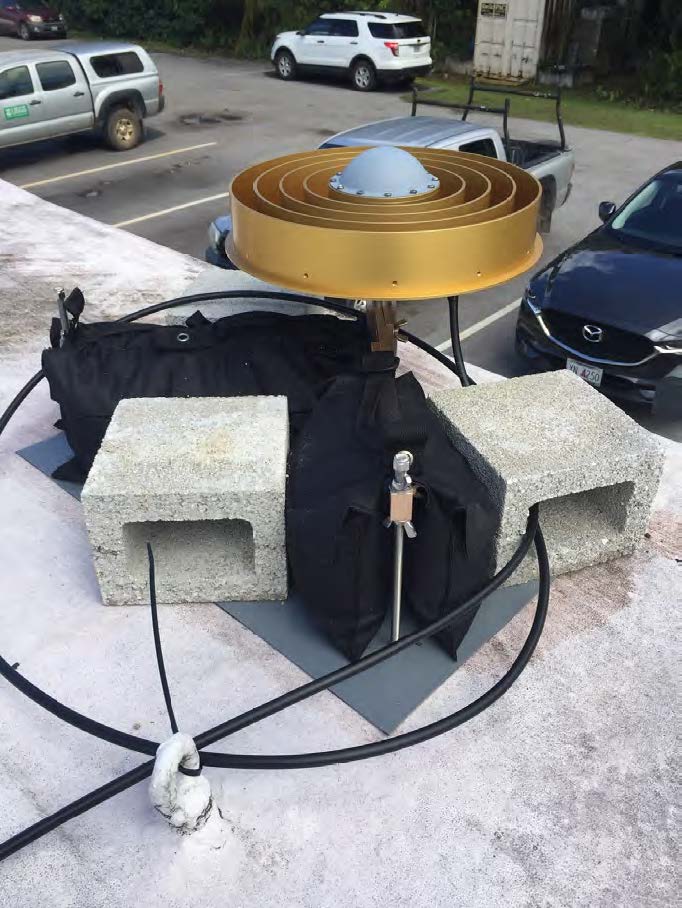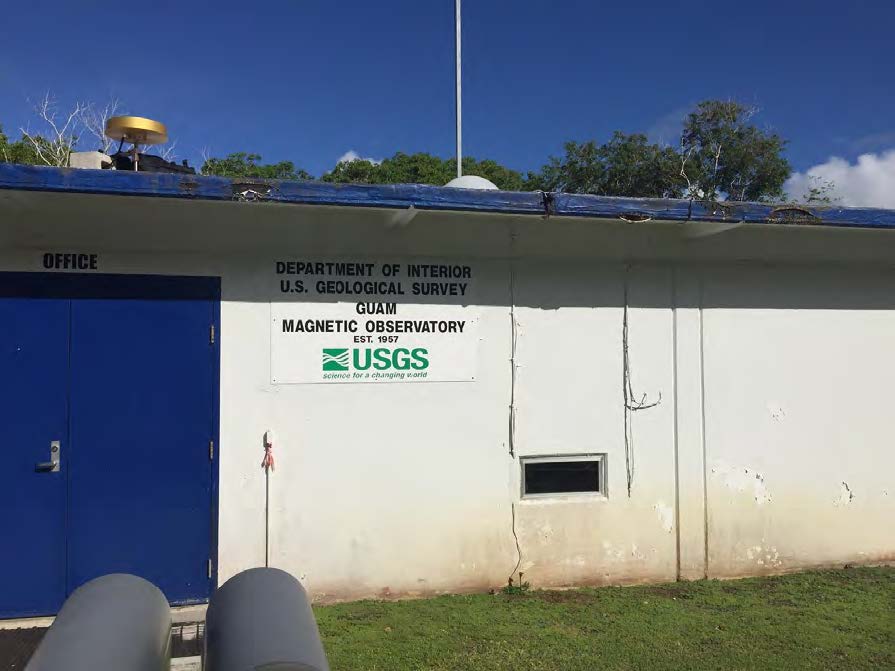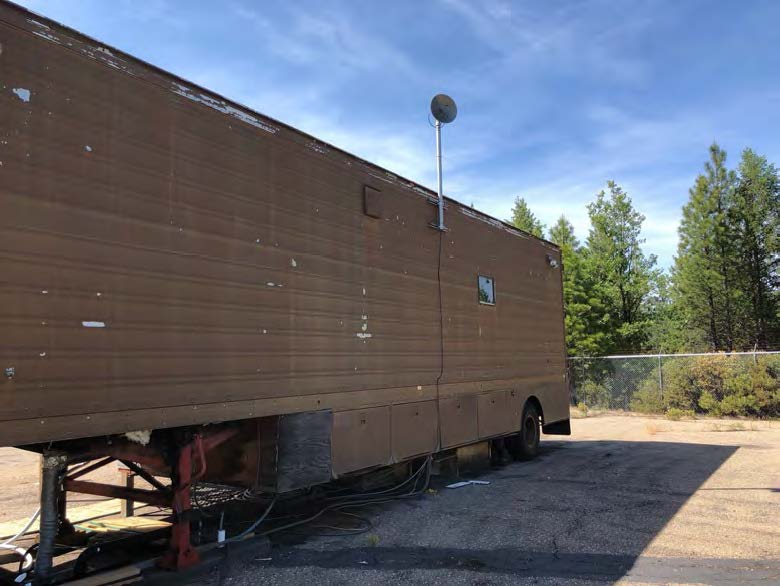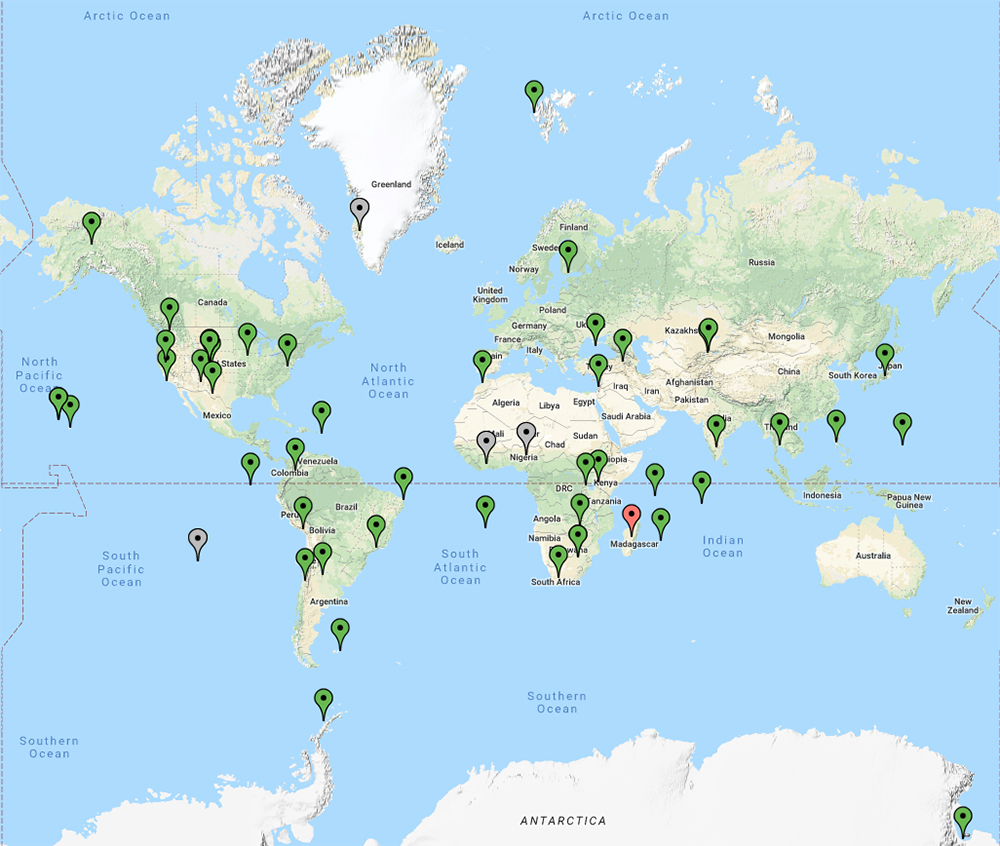Upgrade to a Global Network: Maintaining the NASA GGN

Close up view of the temporary antenna near the existing IGS antenna GUAM. The temporary set up is a spike style mount, resting in divots on a heavy gauge steel plate. Each leg of the mount is weighted down with 25 pound sandbags. (Photo/Sarah Doelger, UNAVCO) 
The temporary antenna (left side of rooftop, no dome) is located approximately 7 feet away from the existing IGS antenna GUAM (old opaque dome in center of roofline) and is attached to a separate receiver inside the Guam USGS magnetic observatory. (Photo/Sarah Doelger, UNAVCO) 
The newly installed mast and antenna provide 2 Mb wireless communications at GGN station QUIN in Quincy, CA. (Photo/Jacob Sklar, UNAVCO) 
Operational state of the NASA GGN on August 24, 2018. Green indicates an operational station. Red indicates a station offline for more than one week. The four stations in grey have been offline for more than a month.
Overview
UNAVCO, in collaboration with the NASA Jet Propulsion Laboratory (JPL), is responsible for the operations and maintenance of the 57 permanent GNSS stations that make up a large portion of the NASA Global GNSS Network (GGN) (Figure 1). The GGN is NASA’s contribution to the International GNSS Service (IGS). UNAVCO staff monitor station network connections, ship new equipment to site operators as necessary, and construct new permanent stations as directed by JPL. UNAVCO staff work closely with local collaborators at each station for routine maintenance as well as troubleshooting when data flow is interrupted; they also perform routine field maintenance and upgrades.
Data from this important network contribute to the international terrestrial reference frame (ITRF). The ITRF is a world spatial reference system that is the foundation for many areas of scientific study including earth processes such as plate tectonics and global sea level change.
This highlight summarizes some of the onsite troubleshooting and station upgrades performed recently by UNAVCO to keep the network robust and reliable.
Upgrading QUIN in Quincy, CA
Retrieving data quickly and completely is crucial. In June, UNAVCO engineer Jacob Sklar upgraded the communications system at station QUIN in Quincy, CA for increased reliability and bandwidth. Prior to the June visit, a new receiver capable of tracking all known GNSS constellations and signals had been installed at the station. This resulted in the need for a larger-capacity communications link to accommodate the larger data flows.
The main communication channel is now a 5GHz radio link that offers over 2 Mbit/second upload speeds and has a static IP address for the GNSS computer, which temporarily stores the data on site before it is remotely pulled to the data center. The radio link replaced a VSAT dish which had performed poorly, was vulnerable to strong weather events, and could not adequately handle the increased amount of data. The VSAT infrastructure will remain on site for use as a backup link if needed.
The changeover required the installation of an antenna mast and network reconfiguration on the computer. The results thus far show a significant drop in latency and a strengthened ability to carry a high-rate real-time data stream with minimal loss.
Upgrading NLIB in North Liberty, IA
Station NLIB (North Liberty, IA) began to show a drop in satellite tracking in April and eventually a total loss of tracking by late May. In early June, UNAVCO field engineer Nicolas Bayou replaced the receiver and antenna which improved tracking but did not restore the station to its full capability. Additional field tests revealed that the antenna cable was also interfering with satellite tracking.
UNAVCO engineer Sarah Doelger and project manager Freddy Blume returned to the site in mid-July to investigate further. They discovered and replaced a bad section of cable as well as a corroded cable connector. The station is now operating normally.
Preparing for an Upgrade in Guam
UNAVCO engineer Sarah Doelger travelled to Dededo, Guam in late June to install a temporary monument and antenna directly adjacent to the long-running IGS station GUAM. This antenna will operate for at least three months before a return trip is made to the site to upgrade the GUAM monument. The upgrade will integrate a height extension and adapter with the existing monument hardware to allow for the installation of a modern, calibrated antenna/radome pair. The temporary antenna will continue to operate for three to six months after the upgrade and will provide a tie for the new GUAM antenna.
Project Information
- Project Lead: David Stowers, NASA
- UNAVCO Engineer(s): Jacob Sklar, Sarah Doelger
- Dates: June – July, 2018
- Location(s): Quincy, CA (map) North Liberty, IA (map); Dededo, Guam (map)
- Funding Source(s): NASA
Related Links
Written by:
- Sarah Doelger
- Posted: 28 August 2018
- Last updated: 4 June 2021
- Tags: GGN, project highlights


